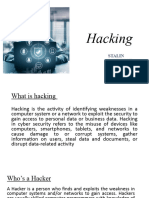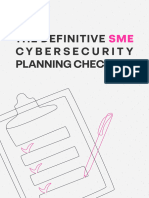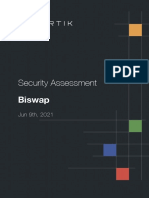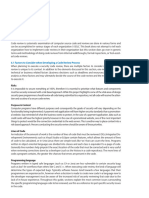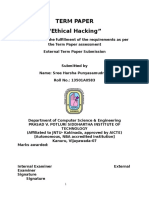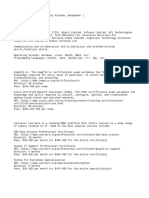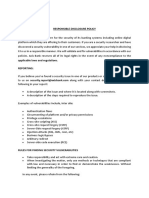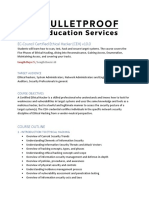0% found this document useful (0 votes)
31 views7 pagesIntroduction To Hacking
Black hat hackers break into systems maliciously, white hat hackers test security ethically, and grey hats sometimes exploit vulnerabilities without permission. Common hacking techniques include phishing, DDoS attacks, SQL injection, and spoofing. Hackers use tools like packet sniffers, keyloggers, and penetration testing software. Consequences of hacking are data breaches, financial loss, and reputation damage. Organizations can prevent attacks using firewalls, antivirus software, software updates, and user training.
Uploaded by
bhagwatgayal10Copyright
© © All Rights Reserved
We take content rights seriously. If you suspect this is your content, claim it here.
Available Formats
Download as PDF, TXT or read online on Scribd
0% found this document useful (0 votes)
31 views7 pagesIntroduction To Hacking
Black hat hackers break into systems maliciously, white hat hackers test security ethically, and grey hats sometimes exploit vulnerabilities without permission. Common hacking techniques include phishing, DDoS attacks, SQL injection, and spoofing. Hackers use tools like packet sniffers, keyloggers, and penetration testing software. Consequences of hacking are data breaches, financial loss, and reputation damage. Organizations can prevent attacks using firewalls, antivirus software, software updates, and user training.
Uploaded by
bhagwatgayal10Copyright
© © All Rights Reserved
We take content rights seriously. If you suspect this is your content, claim it here.
Available Formats
Download as PDF, TXT or read online on Scribd
/ 7






